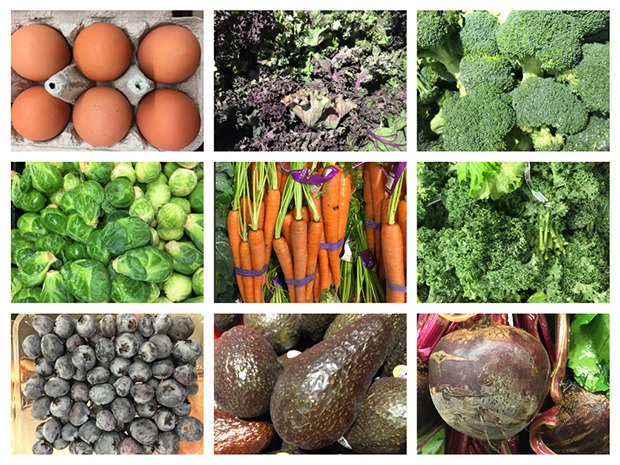By Chelsey Lindahl, RD, CD
For the Reporter
With new diet trends emerging on what feels like an almost daily basis, it’s difficult to separate fact from fairytale.
When examining a diet, it’s important to look at the big picture and not be swept away by smoke and mirrors. Here, we examine the pros and cons of three popular diets: Paleo, Whole30 and gluten-free.
With any steps you take toward a healthier lifestyle, don’t forget the importance of moderation, balance and physical activity to round out your journey toward improved health.
Paleo
The Paleo diet has been steadily gaining traction in the health and fitness world for the past several years. The central focus of the Paleo diet revolves around eating the way our ancestral hunter-gatherers did.
Key components of the diet include the elimination of processed foods, grains, dairy, legumes and added sugars. In addition, emphasis is placed on the increased consumption of fruits, vegetables, nuts, seeds, eggs, meat, fish and poultry.
Benefits of the Paleo diet are believed to include improved GI health, energy and mood — and decreased risk for chronic disease. Unfortunately, there is currently limited science-based evidence to support benefits of the Paleo diet.
Supporters of the Paleo diet believe that it paves the way to optimal health. However, the diet has faced criticism over concerns regarding potential nutritional deficiencies due to the elimination of grains and dairy.
The diet has also faced criticism for its potentially high quantity of saturated fat, which has been shown to increase our risk for heart disease.
Since there’s not much research to date, it’s hard to recommend Paleo for a client. It is also hard to say how the Paleo diet stacks up in comparison to other popular diets like the Mediterranean Diet, which has long been revered for is heart-healthy benefits.
However, if you’re looking to improve your health, there are some great concepts that everyone can adopt from the Paleo diet without jumping in head first: decreased consumption of processed foods and added sugars, and increased emphasis on a whole-foods based diet.
Whole30
What is Whole30? It is a paleo-based diet that eliminates all forms of processed foods, and a few others, for 30 days. On Whole30, you eliminate all sugars, alcohol, grains, legumes, soy, dairy, carrageenan, MSG, sulfites and treat-type foods (even with approved ingredients).
At the end of the Whole30 diet, forbidden foods should be slowly reintroduced to see how each one affects your body — similar to an elimination diet one might do to discover food intolerance or allergies.
So what can you eat on the Whole30? Some fruits, tons of vegetables, meat, seafood, eggs and healthy fats from oils, nuts, seeds and avocado.
What are the benefits? The Whole30 program focuses on total body transformation. Instead of focusing on weight loss, Whole30 is designed as a “reset” button to reprogram your body and move forward on a healthy and healing path.
While the Whole30 program may be beneficial for certain individuals, it not is for everyone. Followers should proceed with caution.
The diet may be helpful to eliminate junk foods, but it is equally important to replace those junk foods with nutritionally dense foods like green leafy vegetables, fresh fruit and healthy fats. A great deal of meal planning and forethought is needed to ensure that nutritional needs are being met on Whole30.
Gluten-free
What is a gluten-free diet?
Gluten is a protein found in wheat, barley and rye grain products. Gluten is also found foods containing these grains, including many processed foods. Foods containing these grains must be avoided when following a gluten-free diet.
How do I know if I need to remove gluten from my diet?
Most commonly, gluten is associated with celiac disease, an autoimmune condition in which individuals lack the ability to effectively break down gluten. Celiac disease can be diagnosed with a blood test to check gluten antibody levels. Talk with your doctor if you have concerns or a family history of celiac disease.
There is increasing concern around gluten intolerance or sensitivity. Food sensitivities do not produce an antibody reaction as seen in celiac disease; they often result in symptoms such as gastrointestinal discomfort, skin irritation or headaches.
If you think you may be sensitive to gluten, consider eliminating it from your diet for two to three weeks. At the end of the elimination diet, add gluten back into your diet for one to three days. If symptoms disappear during the trial and/or reappear with the re-addition of gluten, it is likely you may have an underlying sensitivity.
Is there any harm in removing gluten from my diet or my child’s diet?
There is no harm in following a gluten-free diet. Gluten is not an essential protein; therefore eliminating it does no harm.
Great fiber- and nutrient-rich substitutes include gluten-free oats, brown rice or quinoa. Gluten-free options are becoming increasingly accessible. However, remember to be watchful of processed foods that might provide less nutrition. Choose unprocessed, whole grains whenever possible.
Chelsey Lindahl, RD, CD, is a wellness dietitian at the MultiCare Center for Healthy Living, which helps educate children and families in Pierce County about healthy lifestyle choices through programs such as “Ready, Set, Go! 5210.”



